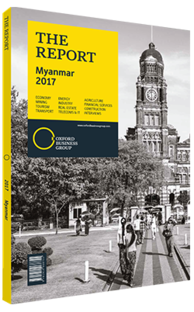Pyin Oo Lwin offers visitors a small taste of the past
Located in the central region of Myanmar, the charming colonial setting of Pyin Oo Lwin has long been a hot-season getaway for locals. Situated in the Shan Highland, 67 km east of Mandalay and at an altitude of 1070 metres, the “City of Flowers” is home to breathtaking waterfalls, stunning gardens and glistening pagodas, as well as many other eye-catching characteristics that has made it an attractive destination for both local and international visitors.
Summer Getaway
With temperatures in the big cities of Yangon and Mandalay soaring above 40°C in the summer months, many inhabitants seek refuge in the hill town of Pyin Oo Lwin. The former military outpost enjoys a tropical monsoon climate and lies within the cool region of Shan State, which has a minimum temperature of 7°C and a maximum of 30°C. The colourful town, formerly known as Maymyo after Colonel May of the Fifth Bengal Infantry, was founded in the late 19th century by the British army during the construction of the Mandalay railway. During British rule the town became the headquarters for the administration in the summer months, up until Burmese independence in 1948. While the name of the town was changed from Maymyo to Pyin Oo Lwin after the departure of British troops, to this day the hill station still has many colonial features, with an array of architectural elements scattered across the hill top in the form of Christian churches and colonial mansions.
See & Do
Visitors to the town often chose to wander around the exquisitely maintained walkways in the bird aviary to catch a glimpse of some of the world’s most colourful and rare birds. The aviary itself can be found in the National Kandawgyi Gardens, which was founded in 1915 and modelled after the Kew Gardens of London. The botanical garden, which is dotted with lakes and ponds, is home to approximately 500 species of flowers, shrubs and trees, including orchid, dahlia and rose gardens, as well as many exotic fruits. Once inside the park, visitors also have access to three museums: a fossils museum, petrified wood museum and butterfly museum. The garden is perfect for a morning walk or an afternoon picnic, and it has a playground for family outings. Those that are slightly more adventurous may choose to climb the 12-storey Nan Myint Tower to get a panoramic view of the park and the captivating Shan Hills. If there is a downside to the park, it is the inability to use a bicycle, and with the front gates closing at 6.00pm you will need to walk briskly to take in all the sites.
Those that want to take home a little taste of the region should visit the Pyin Oo Lwin market, situated at the centre of the town. Here tourists can purchase wines, strawberry jams and coffee, as well as a variety of traditional clothes. The market is within walking distance of Purcell Tower, arguably the town’s most symbolic landmark. Built in 1934, the clock tower was made in commemoration of the Silver Jubilee of the reign of King George V of Britain.
Global Star
The town has also been known to attract architecture enthusiasts from around the world who are eager to soak in a bit of history. They come to see a variety of colonial buildings, some of which date back more than a century. A number of these historical sites have been revamped and turned into popular hotels, such as the Candacraig Hotel, which was originally a guest house for the Bombay Burmah Trading Company that was built in 1904. There is also the Nan Myaing Hotel, which was a former colonial rest house called Craddock Court. Gandamar Myaing Hotel, formerly known as Croxton, was an old British mansion converted into a hotel. These hotels give visitors a chance to take a step back in time.
Tourists can hop on and off horse-drawn carriages as they wander around the tranquil town, stopping to inspect the replica of the governor’s house, which was originally built in 1903, only to be destroyed in 1943. Wherever you decide to stay in the former military outpost, it will undoubtedly be an unforgettable vacation.
You have reached the limit of premium articles you can view for free.
Choose from the options below to purchase print or digital editions of our Reports. You can also purchase a website subscription giving you unlimited access to all of our Reports online for 12 months.
If you have already purchased this Report or have a website subscription, please login to continue.

